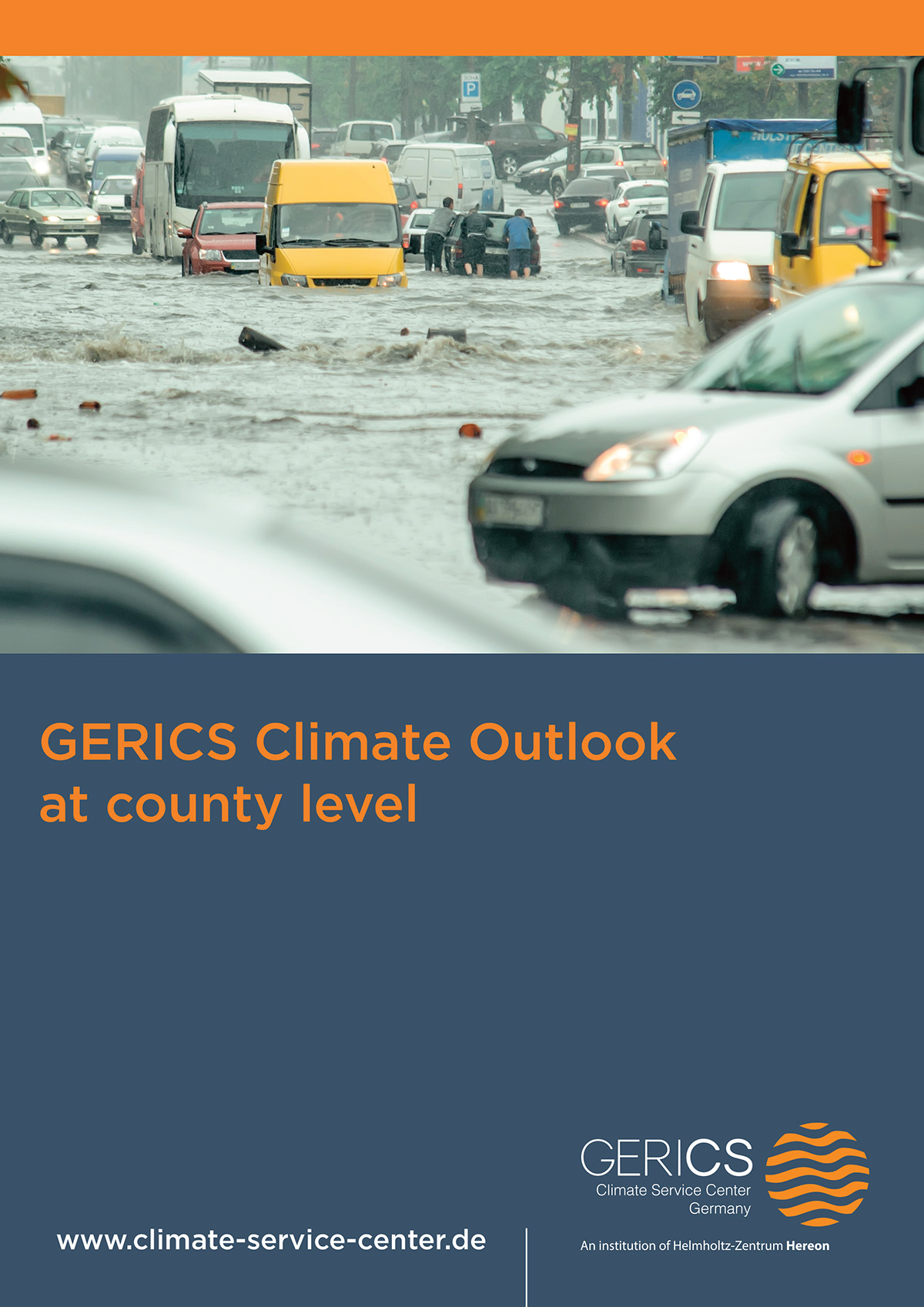Diana Rechid, Sebastian Bathiany and Susanne Pfeifer, assess the future climatic changes in Germany at county level, in the GERICS Climate Outlook report
Global mean near-surface air temperatures have increased by 1.59 degrees over continents since the beginning of industrialisation. In the latest IPCC report, statistics state that global temperatures continue to rise, reaching between 1.4 – 4.4 degrees by the end of the 21st century.
The figures have raised concerns and left many questions unanswered.
What does this mean for specific regions in Germany? What temperature changes do we need to prepare for and how often will extreme temperatures occur? Will hot spells be even more severe? Will water availability be affected and how often should we expect heavy participation?
Here, GERICS provides all the answers in its recently published Climate Outlook documents. It evaluates the projected changes for 17 different climate parameters for each of the 401 German counties, districts, independent cities and regions. The parameters include the number of hot days, the number of dry days, days with heavy precipitation, water balance, mean annual wind speed, sultriness days and more.
The results outlined in the document provide citizens and decision-makers in business and politics with the information they require to plan for the long-term, specifically by individual region. It highlights which climate changes we should prepare for and what can be avoided under climate policies.
Look no further for an insightful guide to county climate change
The Climate Service Center Germany (GERICS) was initiated by the German Federal Government in 2009 as a fundamental part of the German high‐tech strategy for climate protection. Since June 2014, GERICS has been a scientific organisational entity of the Helmholtz‐Zentrum Hereon GmbH.
GERICS delivers scientifically‐sound products, advisory services and decision‐relevant information to help support government, administration, and business in their efforts to adapt to climate change. We are located in the historic “Chilehaus” in Hamburg and employ an interdisciplinary team of natural and social scientists.
The Director of GERICS is meteorologist and climate scientist Prof. Dr. Daniela Jacob.

Since the beginning of industrialisation, global mean near‐surface air temperature has risen by more than 1°C. Over the continents, the temperature has increased by 1.59 °C, about twice as much as over the oceans (IPCC 2021). The global temperature increase can be clearly attributed to human activities and related greenhouse gas emissions.
The sixth assessment report of the IPCC states that the global temperature rise will continue, reaching between 1.4 to 4.4 °C at the end of the 21st century, depending on which future pathways humans will follow. It also says that the 1.5 and 2.0 °C limits of the Paris Agreement will be exceeded unless there are rapid and stringent cuts in the emissions of carbon dioxide and other greenhouse gases.
Around the world, we are already seeing major changes due to global warming. In Europe, significant climate impacts occcur in all regions and sectors (EEA 2017). But what would a further global temperature rise mean in a specific region? What temperature changes over the course of the year do we need to be prepared for? How often will extreme temperatures occur? Will hot spells be even more severe? How will precipitation be distributed and how will the availability of water change? How often will we have to expect heavy precipitation?
The Climate Outlook in short
The recently published GERICS Climate Outlook documents for German administrative districts provide answers to all these questions. The Climate Outlook assesses possible future climatic changes during the 21st century in Germany at county level. One report for each of the 401 German counties, districts, independent cities and regions presents 17 different climate parameters which are relevant for different sectors.
For each county with an area of more than 400 km2, the outlook refers to spatial averages for that area, whereas smaller districts and cities are combined with the surrounding counties to form a region.
It is the first time that consistent climate change information is now available for all German counties, based on the current state of available regional climate model simulations for Europe. Political and administrative decision‐makers as well as local businesses are thus provided with a concise overview of the expected regional characteristics of climate change.
All 401 GERICS Climate Outlook documents at the county level can be downloaded here: https://www.gerics.de/products_and_publications/fact_sheets/landkreise/index.php.de


